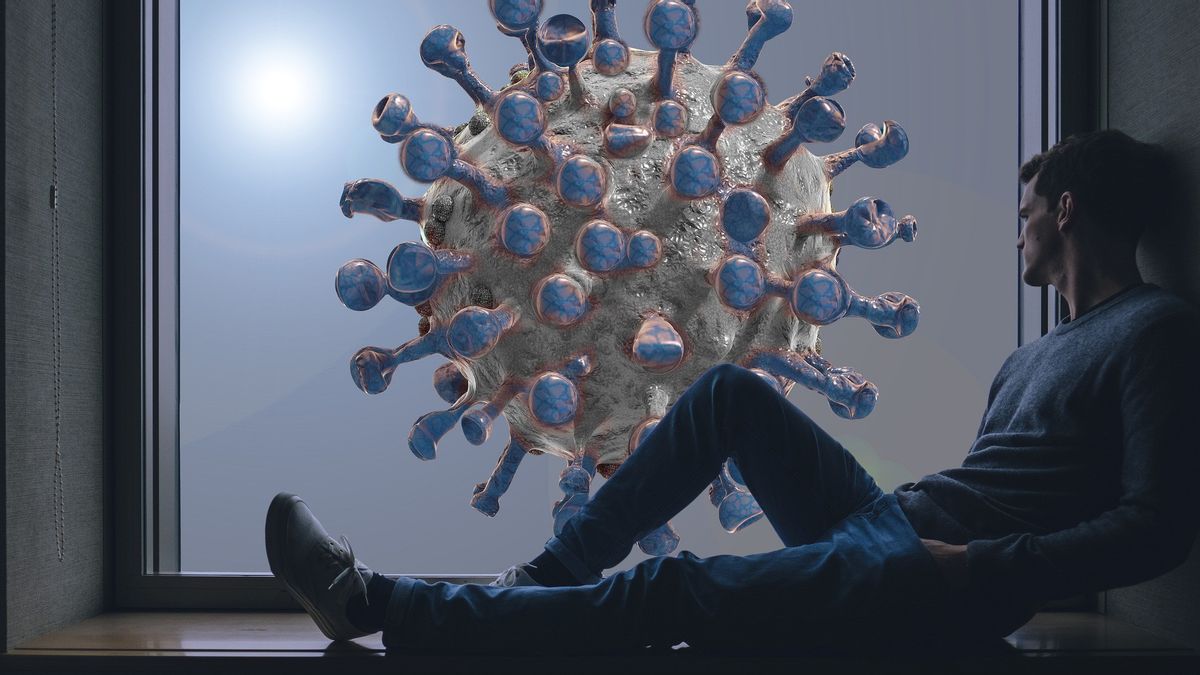JAKARTA - The Centers for Disease Control and Prevention (CDC) revised quarantine guidelines to shorten the recommended isolation period after being infected with COVID-19 from 10 days to 5 days.
"Given what we currently know about COVID-19 and the Omicron variant, the CDC is shortening the recommended time for isolation for the public," the CDC said in a statement.
This latest guide applies to someone who is positive for COVID-19 without symptoms. The CDC is also shortening the quarantine time required for people who have been in close contact with individuals who have tested positive for COVID-19.
The new guidelines have been criticized by health experts who insist that without testing, a person is potentially infectious by leaving isolation too soon.
An anesthesiologist and former American surgeon general, Jerome Adams, criticized the decision, pointing out that no doctor or scientist he knew would allow themselves or their families to leave quarantine before receiving a negative test result.
"Despite what the CDC says, you really should try to get an antigen test and make sure it's negative before leaving isolation and quarantine," he wrote on social media.
In response to increasing criticism of the newly revised guidelines published by the agency on January 4.
The CDC explains that a person can leave isolation or quarantine after 5 days if they have not had a fever for 24 hours and symptoms improve.
If you have access to a rapid antigen test and get a positive test result for COVID-19, then you must remain isolated for another 5 days.
However, if the test result is negative, you can leave the house, but must continue to wear a mask around other people at home and in public places for up to 10 days.
If you don't have access to a test, you should still avoid high-risk places like nursing homes and wear a mask when in public. In addition, you should avoid traveling.
Recommendations for people in high-risk environmentsThe revised guidelines specify that people working in "high-risk" environments that include correctional facilities, homeless shelters and cruise ships, must be quarantined for at least 10 days after exposure, regardless of vaccination or booster status.
Recognizing the issue of staff shortages, the CDC has also determined that certain facilities may shorten isolation periods, but only after consultation with state, local, tribal, or territorial health departments.
If you are in contact with someone who is at higher risk, such as someone with a weakened immune system, you might consider getting tested frequently to reduce the chance of transmitting the disease.
Meanwhile, experts say preliminary evidence appears to suggest that the omicron variant is shown to have significantly less severe symptoms.
"The data around omicron is still relatively new, but while we saw a significant increase in the number of cases, it appears that the death toll has remained unchanged so far," says Derreck Carter-House, PhD, test development scientist at Clear Labs, a leader in next-generation sequencing. (NGS) fully automated for turnkey diagnostics.
According to Carter-House, omicron is now the dominant type of disease in the United States, and although CDC data show the average daily case increased from 87 to 490,000, the death toll remains around 1,100 per day.
"However, as we learned from the Delta variant, the number of deaths may follow the number of cases," he said.
Priscilla Marsicovetere, JD, PA-C, Dean of the College of Health & Natural Sciences at Franklin Pierce University warns the public not to let their guard down.
Empirical data, including public health statistics and peer-reviewed research, suggest that omicron causes milder disease than previous variants of COVID-19.
He added that while this is encouraging news, the spike in omicron is still having a severe effect.
"The facts are infections are still happening, the health care system is still being stressed, people are still being affected, and people are still dying from COVID-19," Marsicovetere said.
He also explained that the potential impact of additional spikes, or more importantly, further mutations of the coronavirus could have a devastating impact on the progress that has been made in tackling COVID-19.
"Public health safety measures, including vaccination, masks and physical distancing if necessary, are still key steps in our ongoing fight against COVID-19," he said.
The English, Chinese, Japanese, Arabic, and French versions are automatically generated by the AI. So there may still be inaccuracies in translating, please always see Indonesian as our main language. (system supported by DigitalSiber.id)








